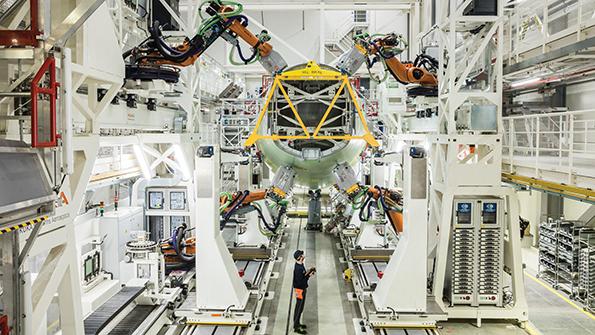Opinion: Finding Opportunity In Crisis

You only find out where you are on the technology curve when the tide goes out. COVID-19 has ended the near two-decade boom in aviation and plunged the industry into crisis—and it is compounded by a lack of technological preparedness. What is worse is the significant uncertainty about the speed and strength of the recovery, which for aerospace is likely to be more prolonged than for the overall economy due to long-term damage to the airline industry. Airlines have taken on an enormous amount of debt, and that will dominate their capital allocation priorities.
This ebb tide has exposed the dated technology chains in our industry. These are not just information technology systems. Every company operates on technology chains—a combined set of approaches to deliver customer value. Look at three important technology-chain elements: digital transformation, the supply chain and the workforce of the future.
Digital Transformation It has been said that “data is the new oil,” yet the aerospace industry as a whole has been slow to get the memo. Certainly there have been some advancements, including widespread use of 3D printing, but overall it has been slow to invest in digital transformation. One area ripe for a digital upgrade is design and development of new aircraft. The industry should significantly reduce the time to design new aircraft by adopting enhanced data analytics and artificial intelligence. There should also be increased investment in greater automation and analytics in operations, factory production, assembly and MRO. Examples abound in other industries. The relative insularity of the industry has done little to modernize its technology chains.
The aerospace industry is rich with data, but it is typically difficult to mine and analyze because of its sheer scale and the fact that it originates from myriad and disparate sources and systems. Investment in automated analytical tools makes it possible to access and digest data in real time, enabling better decision-making. Often these improvements go far beyond improved efficiency because the data, in its current state, is so cumbersome and manual that it is not even possible to accumulate it all for analysis. The technology curve for data manipulation, analysis and monetization is moving at exponential speed. It is critical, then, for the industry to ensure it can put its data—and new data analysis tools—to better use to truly operate in dynamic environments.
Supply Chain and MRO The aerospace supply chain lacks speed, agility and visibility. True lead times are often years. We have seen how this lack of agility hindered the recent production ramp-up by extending the schedule and creating bottlenecks. These dynamics create challenges in scaling down and then ramping back up.
Furthermore, while much of the value chain is highly consolidated, there remain thousands of small suppliers that create risk around performance, agility and viability. Beyond the immediate triage to preserve capability, the industry should consider further consolidation, which would reduce risk and create appropriate scale for suppliers to invest in technology.
For supply chain management, blockchain is a promising technology, creating visibility through the entire ecosystem and thereby validating authenticity and identifying bottlenecks in real time. Blockchain also creates an individual digital twin of each aircraft, including the life history of all its components. The technology can help the industry steepen its technology chain curve by improving predictive maintenance, safety and reliability and improving MRO cost and performance.
Workforce A digital value chain requires a digital workforce. Companies should invest in accelerating the workforce of the future by creating a digital culture and training. The entire workforce is affected by digital transformation and requires new skills. COVID-19 will undoubtedly add layers of expense around the workforce, including work continuity issues, medical costs and implementation of health testing. To counter these costs, productivity will need to increase. This degree of change can be daunting and requires deliberate change management practices to create a pervasive and lasting digital culture. Drawing an analogy to computer skills, not everyone needs to understand programming to operate a computer. Yet all employees need digital acumen to identify applications and better decision-making skills to apply to new data analytics.
It has been said that management makes money in an economic expansion but earns it in a recession. While companies are appropriately managing costs in this crisis, it is critical that they invest in strategic priorities to ensure their long-term competitiveness. It is time to get on the right technology curve.
Scott Thompson is the aerospace and defense leader and Bill Lay is an aerospace and defense principal at PwC U.S.




